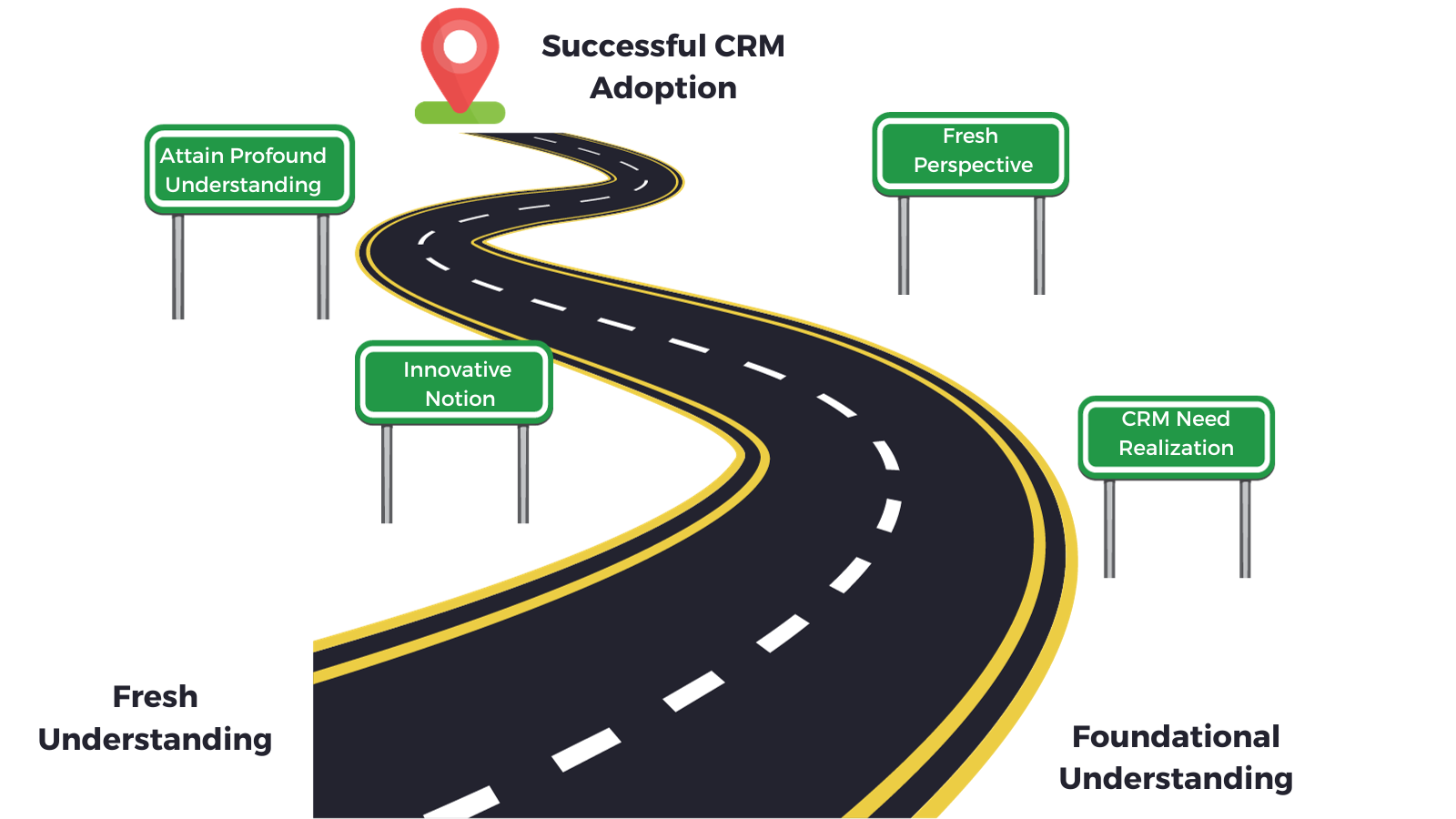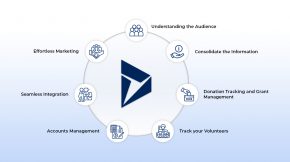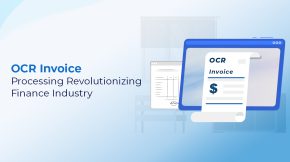Change Management for CRM Adoption- Achieve greater impact and operational visibility
Key Adoption Strategies MS Dynamics 365 represents a transformative business tool, affording a multitude of operational advantages. This platform holds the potential to elevate customer experiences, increase lead generation, enhance deal closure rates, and yield a substantial return on investment. Nevertheless, organizations aspiring to optimize their technological capabilities must establish meticulous adoption strategies to maximize operational efficiencies.
Inadequate guidance during the adoption of MS Dynamics 365 can potentially hinder organizations from achieving their overarching business objectives. This document elucidates the pivotal strategies that organizations should employ to enhance MS Dynamics 365 adoption and align with their strategic business goals.
Key Objectives of onboarding a CRM System like MS Dynamics 365
Aligning Business Goals with Microsoft Dynamics 365 Adoption is a multifaceted concept that varies in interpretation among stakeholders. The selection of precise objectives is paramount, as it sets the organization on the optimal trajectory for success. Alignment with pertinent performance metrics is indispensable for business achievement, not only in fostering acceptance of MS Dynamics 365 but also in the realization of strategic objectives. Well-defined objectives serve to concentrate organizational efforts on critical priorities and, when formulated with precision, can serve as potent motivators, driving team engagement and expediting results.
Key objectives should encompass the following aspects:
- Definition of a clear organizational rationale for investing in MS Dynamics 365 Cloud.
- Employment of the S.M.A.R.T. methodology (Specific, Measurable, Achievable, Realistic, and Timely) for goal establishment.
- Demonstrated commitment to the program’s success.
- Methodologies for validation and verification of the anticipated outcomes.
- Alignment of business objectives to support the overarching goal.
- Promotion of reasons for assessing and proving project, initiative, or organizational outcomes.
Successful CRM Adoption for maximal usage
Successful MS Dynamics 365 implementation is not solely determined by project completion but is defined by end-user adoption. Transitioning to MS Dynamics 365 offers opportunities to enhance organizational efficiency in diverse ways. To facilitate a seamless transition, careful consideration of the following Change Management strategies is essential. MS Dynamics 365 implementation signifies a substantial transformation for any organization, and effective change management is imperative for ensuring the success of MS Dynamics 365 adoption. Change Management is the linchpin for fostering user adoption and facilitating the transformation of the organization.
However, to ensure a smooth transition to MS Dynamics 365, the following Change Management strategies should be considered:
- Establishment of a dedicated Change Management team, ideally comprising upper management, representatives from impacted groups, and, significantly, end-users.
- Commencement of the project with end-user involvement during the kickoff phase, offering an opportunity to communicate impending changes, their rationale, impact, and the associated benefits.
- Provision of comprehensive resource materials to mitigate any apprehensions arising from unfamiliarity with MS Dynamics 365.
- Transparent communication regarding project delays or other pertinent concerns to maintain morale.
- Early announcement of the training plan, incorporating training dates and formats as part of regular communication to facilitate preparation and scheduling.
The strategies for MS Dynamics 365 CRM Adoption are delineated as follows:
Consider a Customer Relationship Management (CRM) tool. In the context of medium to large organizations or sales teams, CRM tools serve to generate opportunities, track progress, manage the sales pipeline, employ Configure, Price, Quote (CPQ) applications, oversee contract management, invoicing, expense management, commission calculations, and Search Engine Marketing (SEM) applications for payment collection. Examining this subset of applications necessitates a recognition of the complexity of a salesperson’s daily tasks. Learning one such application is demanding, yet mastering all of them is the true challenge.
The roadblocks to CRM Adoption
Why do some organizations seeking MS Dynamics 365 adoption experience deviations from their intended course, despite the evident benefits and quantifiable business value it promises? Multiple factors contribute to this, including:
- Emphasis on delivering technology “on-time” and “on-budget” without adequate measures to stimulate and sustain user adoption throughout the system’s lifecycle.
- User reluctance to comprehensively embrace the software due to concerns about invasive monitoring and disclosure of confidential information.
- Absence of project ownership within the organization.
Embrace the much-needed change or be left out!
The positive news is that in many cases, the challenge is not an inherent problem with MS Dynamics 365 but, rather, a matter of “Change Management.” The primary hurdle in achieving MS Dynamics 365 adoption is the resistance to change inherent in human nature. To some extent, individuals tend to resist change for several reasons:
- They perceive it as being contrary to their best interests and more aligned with management’s objectives.
- Change is viewed as a threat, even when recognizing inefficiencies and inadequacies.
- The perceived time and effort required to learn and implement a new tool are considered insurmountable in an already busy schedule.

MS Dynamics 365 Training & On-boarding
The success of a significant project is at risk when end users lack proficiency in utilizing MS Dynamics 365. In contrast, well-trained MS Dynamics 365 users possess the capability to harness the platform effectively, resulting in time savings and enhanced productivity. One of the pivotal advantages of MS Dynamics 365 is its propensity to foster increased user adoption, leading to heightened system utilization and correct usage, thereby augmenting operational efficiency.
To ensure success:
- Analyze which department requires automation at large- is it your sales, marketing, customer service? You can also have the need to automate and align all the Sales, Marketing, and customer service operations in one platform.
- Analyze if you’d like your CRM to capture and automate third-party tasks which might require a custom portal built on MS Dynamics 365 platform.
- It is imperative to develop a comprehensive training plan, actively seek user feedback, and incorporate these insights into training programs.
- Equally essential is an on-boarding plan, which not only imparts MS Dynamics 365 training to new representatives but also motivates them to excel. The formation of pertinent groups for new hires facilitates their access to necessary support, and the integration of features such as Chatter expedites the onboarding process for new representatives.
Release Management Plan
An effectively planned Release Management strategy enhances organizational agility by fostering collective collaboration among team members to attain objectives that align with overarching business goals. This approach empowers key stakeholders to steer the organization towards success and favorable business outcomes. It is recommended that customers adhere to the best practices outlined by MS Dynamics 365. Conforming to the established MS Dynamics 365 processes ensures compliance and bolsters the supportability derived from MS Dynamics 365. Aligning your release schedule with MS Dynamics 365’s release is crucial.
Numerous organizations encounter challenges when they must release code while MS Dynamics 365 is undergoing upgrades. Typical queries in such situations include:
- How should the changes be tested?
- Should we release our changes before or after MS Dynamics 365’s release?
- What is the business value of our changes compared to the business value of new features introduced by MS Dynamics 365?
- Which features from the new release should be incorporated?
- How many users will be affected by the internal release?
- How many sandboxes are available for testing internal changes related to MS Dynamics 365’s new features?
While some organizations opt for early feature releases by reducing the scope of their deployment and implementing changes before the new features are available in the Sandbox, others choose to test the changes in the Sandbox for the new release and wait for the new MS Dynamics 365 release to be integrated into the Production org. Once the new release is operational in the production org, the organization can deploy its new features.
The time gap between deployment and MS Dynamics 365’s new release does not need to be extensive, as the changes have been evaluated on a preview Sandbox. Nevertheless, it is strongly advised to maintain a temporal buffer between your release schedule and MS Dynamics 365’s release.
Maximizing your MS Dynamics 365 Investment
A strategic approach to MS Dynamics 365 adoption is imperative for realizing the full potential of the new CRM experience and achieving a maximum return on investment. Microsoft Dynamics 365 CRM adoption should be user-centric, starting from the planning phase, continuing through the launch, and extending into the post-launch period. Users should receive training, support, and compelling reasons to recognize the value added by MS Dynamics 365 adoption.
Encouraging continuous feedback and engagement from users at each stage is crucial, and their input should be incorporated to enhance their experience and boost adoption rates. If you face challenges with MS Dynamics 365 adoption or seek strategic guidance, we invite you to engage with our team to learn more about enhancing the customer experience and engagement through a successful MS Dynamics 365 adoption.
Conclusion
Change is undeniably challenging, but in the realm of business, it is fundamental for survival. Companies that do not adapt invariably become obsolete. Microsoft Dynamics 365 serves as a catalyst for positive change, ensuring organizations remain at the forefront of their industries.
Beyond Key is offering a no-coat Change Management Consulting for CRM Adoption for Nonprofits. We’ve built a ready-to-kickstart CRM for Nonprofits called Right Cause. It is built to address digital transformation challenges in the Not-for-profit sector by helping them streamline Fundraising, Donations, Volunteer Management, and Grant Management.















